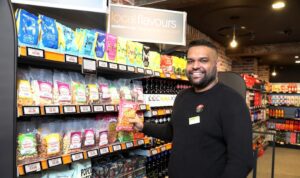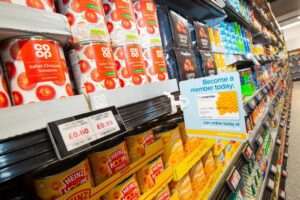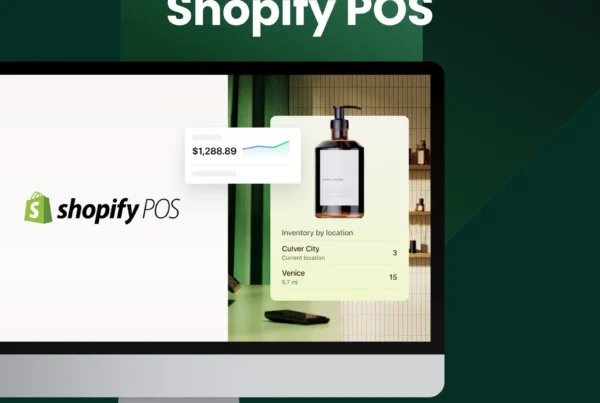
Electronic Shelf Labels (ESLs) are gaining traction as digital transformation reshapes retail. These dynamic price displays revolutionize how retailers manage pricing, promotions, and inventory accuracy. Yet, despite their benefits, adoption remains uneven due to various concerns and objections. This article explores these common barriers and offers strategic counterarguments supported by data to help decision-makers see the full picture.
📋 Cost-Related Objections
1. Upfront Investment
Objection: ESL systems require significant upfront investment in hardware, software, and infrastructure. For retailers managing thousands of SKUs, this can appear financially daunting.
Counterargument: While initial costs can be substantial, long-term savings often offset the investment. A study by Deloitte found that retailers using ESLs reported up to 80% reduction in labor costs related to price updates and up to 50% fewer pricing errors.
Quantifiable Insight: Manual price updates can cost approximately $3-$6 per label annually. For a 10,000-SKU store, that’s $30,000–$60,000 per year. ESLs, with a lifespan of up to 10 years, can reduce this to a fraction.
2. ROI Uncertainty
Objection: Retailers are hesitant without clear, measurable ROI.
Counterargument: ESLs impact multiple cost centers: labor, waste reduction, and compliance. Retailers like Carrefour and Kroger have reported a positive ROI within 12 to 24 months after ESL implementation.
Stat: According to ABI Research, ESLs can deliver a 186% return on investment over five years.
3. Budget Constraints or Timing
Objection: ESLs may not align with fiscal budgeting or face delays due to other capital projects.
Counterargument: Many vendors offer flexible pricing models, including leasing, phased rollouts, and pilot programs to reduce budgetary impact. By piloting in high-traffic locations, retailers can validate ROI and justify future investments.
Example: Migros, Switzerland’s largest retailer, began ESL adoption in a small number of stores and expanded nationwide over four years based on pilot success.
🛠️ Operational & Technical Concerns
4. System Integration
Objection: Retailers worry about integration with existing POS or ERP systems.
Counterargument: Modern ESL platforms offer robust APIs and middleware designed to integrate with nearly all major retail systems. Vendors often provide integration support or work alongside system integrators.
Insight: We offer integration solutions compatible with Oracle, SAP, Microsoft Dynamics, and all the POS/ERP providers across North America, including Epicor, LOC, LBOSS, ECI, Shopify, WooPOS, Auto-star, Positec, and many more.
5. Installation Complexity
Objection: Concerns about the duration and disruption of ESL installation.
Counterargument: ESL systems are increasingly plug-and-play. Installations can be completed overnight or during off-peak hours with minimal disruption. Phased deployment reduces operational impact further.
Case Study: A Canadian grocery chain installed ESLs across the majority of their stores with an average total installation time of just 1-2 days per store, thanks to the seamless plug-n-play technology.
6. System Maintenance
Objection: Fears about reliability, battery life, and support.
Counterargument: The new 4th-generation BLE ESL batteries now last up to 10 years, depending on update frequency. We provide central monitoring and remote diagnostics, software updates, and SLAs (service-level agreements) to ensure uptime. An optional 10-year warranty covers batteries and full replacement of damaged labels.
🧠 Change Management & Behavior
7. Internal Resistance to Change
Objection: Staff and management are often hesitant to change traditional processes.
Counterargument: Proper training and demonstration of ESL time-saving benefits often shift employee perception. Retailers report improved morale due to reduced repetitive tasks.
Source: EHI Retail Institute Technology Trends
Survey: According to a study by EHI Retail Institute, 71% of employees in ESL-enabled stores reported higher job satisfaction due to fewer manual pricing tasks.
8. Training Time & Learning Curve
Objection: ESL systems may require extensive training.
Counterargument: Most modern ESL systems feature intuitive interfaces and mobile apps. Training sessions typically last under two hours, and support materials are widely available.
Example: Aldi Nord rolled out ESLs in Germany and reported less than one hour of training needed per employee.
9. Dependence on Technology
Objection: What happens during outages, software issues, or hardware failures?
Counterargument: Redundant communication protocols (e.g., RF, BLE) and edge computing capabilities ensure ESL functionality even during partial outages. Many systems display the last known price until restored.
Insight: Leading ESL systems have 99.99% uptime and fallback settings that prevent shelf pricing from going blank during system issues.
🧹 Strategic Misalignment
10. Low Priority Relative to Other Initiatives
Objection: ESLs are deprioritized in favor of projects like mobile POS or e-commerce.
Counterargument: ESLs complement these priorities. For example, synchronized promotions across online and in-store channels are only feasible with real-time pricing, which ESLs enable.
Quote: “ESLs are a foundational enabler of true omnichannel pricing” – McKinsey & Co., 2022 retail digital transformation report.

11. Perceived Fit for Larger Retailers Only
Objection: Small retailers think ESLs are only practical for enterprise chains.
Counterargument: Scalable ESL solutions now exist for stores of all sizes. Cloud-based management and lower hardware costs have made ESLs accessible to independents.
Example: French bakery chain Marie Blachère uses ESLs in stores under 1,000 sq. ft., benefiting from automated updates and reduced errors.
🔒 Aesthetic & Customer Experience Concerns
12. Visual Appeal
Objection: ESLs may clash with in-store branding or look too industrial.
Counterargument: Today’s ESLs offer customizable frames, fonts, and even full-color e-paper displays to match brand aesthetics.
13. Customer Readability and Trust
Objection: Older or less tech-savvy customers may mistrust digital pricing or struggle to read ESLs.
Counterargument: ESLs now offer high-contrast, anti-glare displays and font size customization. Most customers appreciate the accuracy and clarity ESLs offer.
Study: A 2023 Retail Systems Research survey showed that 78% of customers trusted digital prices more than paper tags due to perceived accuracy and cleanliness.
Final Thoughts
Electronic Shelf Labels are no longer futuristic—they’re a practical and increasingly necessary part of modern retail operations. By understanding and proactively addressing objections, retailers can unlock the full value of ESLs. From operational efficiency to customer satisfaction, the long-term benefits outweigh the short-term hurdles.
Next Steps
Complete the form below to learn more about how you can benefit from electronic shelf labels and explore how ESLs can benefit your business. To schedule a consultation, reach out to our team today. We are committed to helping you transform your in-store operations and capture the advantages of this innovative technology. Our experts can provide a customized assessment of your needs and guide you through the implementation process, ensuring that you get the most out of your investment in ESLs. Let us help you take the next step toward a smarter, more efficient retail operation.
References
- ABI Research Report
- Deloitte 2021 Retail Industry Outlook
- McKinsey Report on Retail Transformation
- EHI Retail Institute Technology Trends
- Retail Systems Research Report






